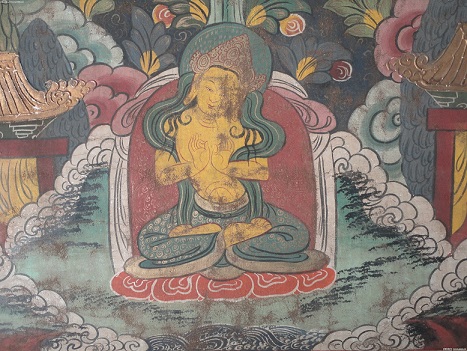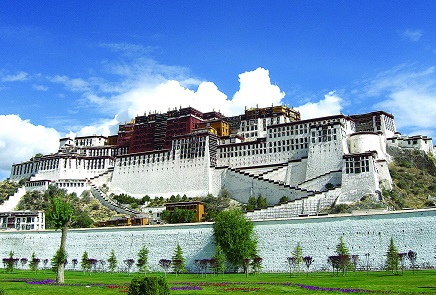By Tom McGregor, CNTV Panview Commentator and Editor
Southwest China’s Tibet Autonomous Region holds a long and rich cultural history. Tibetans cling to the Buddhist faith with prayers and crafting beautiful artworks. A prominent style of Tibetan art is Thangka painting.

Thangka painting is a traditional method of Tibetan Buddhist scroll painting. Artists utilize a form of silk painting that dates back to the Tibetan Tubo Kingdom (629AD-840AD).
The elements used are minerals and organic pigments that are derived from materials, including coal, agate, sapphire, pearl and gold. The color mixtures mean the paintings can last for centuries.
The United Nations Education, Scientific and Cultural Organization (UNESCO) has listed famous Thangka painting, murals, patchworks crafts and sculptures as Intangible Cultural Heritage of Humanity in 2009.
Tibetan families routinely place Thangka artwork in their homes for worship. Meanwhile, over 3,000 artists work full-time as Thangka painters.
Ushering in a new law
The Chinese government appreciates Thangka paintings and Tibet’s traditional culture. Beijing intends to promote it not only for the benefit of the nation, but for the world as well.
Wang Chen, director for the institute of standardization under the regional bureau of quality and technical supervision, announced Beijing would support professional standards for Thangka art from the aspects of cloth pigment, paintings, skills and much else.
“As Thangka becomes increasingly popular, we should standardize Thangka production and marketing to develop the excellent art,” Nymia Tsering, an official with the regional cultural department, told CRI English news.
The standards can help aspiring painters to learn more about the unique style. Artists are encouraged to follow age-old patterns, but to innovate and develop new designs too.
Art collectors can visit Tibet to boost artists income and to highlight the joys for outsiders to visit the region.
Luring in collectors
Thangka paintings have gotten more popular with art collectors worldwide. Some paintings have been sold at auction houses in Hong Kong, Macao, Taiwan, countries in Southeast Asia, Europe and North America.
In September 2015 at the Sotheby’s Asian Art Sale in New York, a Buddhist tapestry Thangka painting from the Qing Dynasty (18th Century) was auctioned off for US$ 1.5 million.
Beijing plans to market Thangka art to create greater awareness from the international art community. A favorite tourist hot spot to view Thangka paintings can be found at Potala Palace, a Tibetan Buddhist monastery in Lhasa.

Additionally, Lhasa’s Norbulingka Palace hosts the annual Shotun Festival, opening its doors to visitors from all over Asia and the West. The palace holds 126 pieces of Thangka art on permanent display.
The Shoton Festival has transformed into a landmark annual celebration in the Tibet Autonomous Region.
Tibetan medicine art
Thangka illustrations have also been found in ancient Tibetan medical books. Artwork depicts the anatomy and physical body processes in the 17th Century ‘Four Tantras,’ book composed by Sangye Gyamtso (1653-1705), a regent of Tibet.
The book provides an in-depth account of Tibetan medical science, categorized in four tantras - Root, Explanatory, Oral Transmission and Last.
The ‘Explanatory Tantra’ section describes the anatomy and physiology of the body from birth to dying. Thangka style drawings depict the body as it grows from the cradle to the grave.
Thangka illustrations play a crucial role for Tibetan medicine doctors to learn the science.
Thangka for the future
Thangka paintings are so beautiful and well-crafted that they deserve more global acclaim. Many tourists visiting the Tibet Autonomous Region love to visit art museums, Buddhist temples and souvenir shops to capture a glimpse of Thangka.
The Chinese government is doing its part to ensure more people learn about the unique style of artwork. By defining formal standards and defining what Thangka really is, painters and art collectors can rest assured they have uncovered authentic Thangka paintings.
( The opinions expressed here do not necessarily reflect the opinions of Panview or CCTV.com. )

Panview offers a new window of understanding the world as well as China through the views, opinions, and analysis of experts. We also welcome outside submissions, so feel free to send in your own editorials to "globalopinion@vip.cntv.cn" for consideration.















